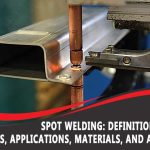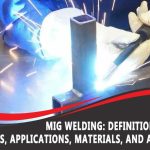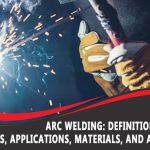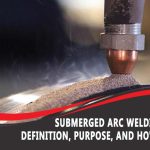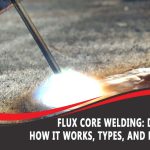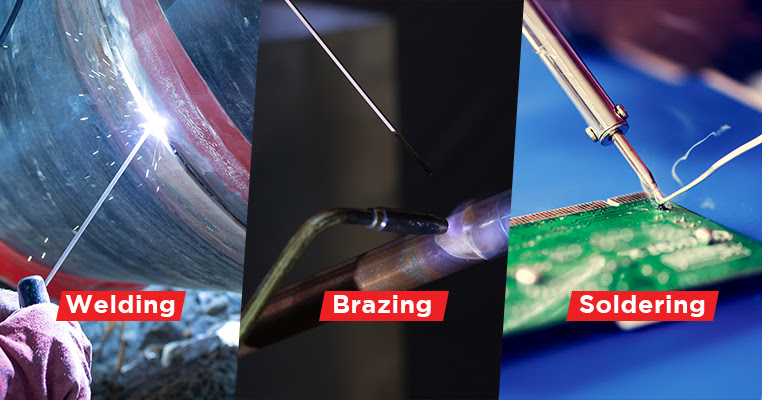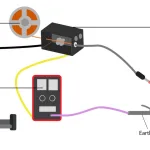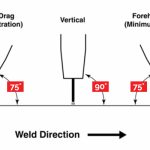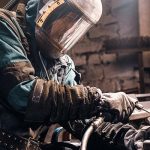When you find yourself in a situation where you have two pieces of material, and you really would prefer them to be a single piece, you have to join them together. There are many different ways to do this, from adhesives to friction joining to welding.
Welding, Brazing and Soldering
Welding Town
Three common options you see discussed primarily around pipefitting and metal joinery are welding, brazing, and soldering. What you may not know is what, specifically, each of these are and how they differ from one another.
So, let’s dig into them and discuss them.
What is Welding?
Welding is actually a broader term than many realize, but in typical usage, what you’re actually referring to is arc welding.
Arc welding uses a controlled arc of electricity to generate an immense amount of heat in a flash, melting metal in an area around the arc. It then uses a filler material to mix with the two pieces of base material, mixing the three into a single material. This hardens as it cools into a seam that holds the two pieces together by effectively turning them into one single piece.
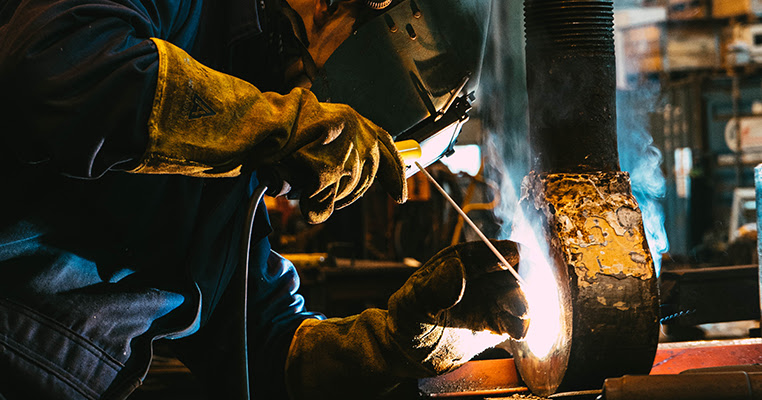
Since molten metal is susceptible to chemical changes much more easily than solid metal, arc welding generally uses some form of shielding gas to protect the weld pool from oxygen and other inclusions. This may be generated through the use of flux that produces the gasses when it melts, or can be pumped in from a gas supply.
Temperature control is important in welding. Too hot, and the metals can change properties, melt through and burn away, or end up significantly weaker than the surrounding material. Too low, and the metals won’t melt enough to mix and join.
What is Brazing?
Brazing is similar to welding in two ways: it uses higher temperatures (though not as high as welding), and it joins two pieces of metal together with a filler material, filling the gap and providing a strong joint.
The biggest difference is how it works. With brazing, the base materials are not melted at all. Instead, the two materials fit together with a minuscule gap between them. This gap is enough space so that capillary action can draw a liquid into that spacing. In this case, the liquid is a molten filler metal.
Brazing requires the use of a flux for three reasons. First, the flux aids in the capillary action required to pull the filler into the joint spacing. Second, it promotes the even spread of the filler metal throughout and over the base material in a process known as wetting. Third, the flux helps remove any oxides and other impurities that would come from the brazing process and weaken the joint.
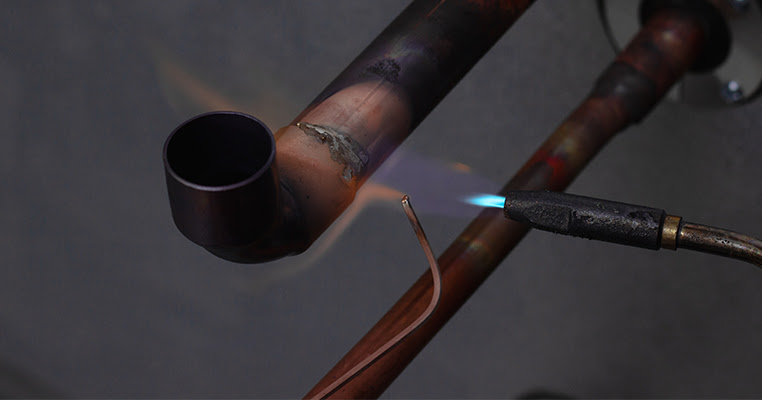
Note: capillary action is a quirk of physics where the interaction of adhesive and cohesive forces draw a liquid along a narrow gap, usually a tube. It’s a somewhat complex concept to explain in terms of pure physics, but fortunately, you don’t need to know the physics to know it works and use it in brazing. You can read more about capillary action here if you’re curious.
Brazing is most often found in pipe fitting, particularly in plumbing; most metal pipes in a typical household are fit together using a brazing process.
What is Soldering?
Soldering is another process used to join materials. In contrast to the other two, it’s a comparatively low-temperature process. A bonding material – the solder itself – is melted and used to adhere two pieces of material together. Soldering is extremely common in electronics, as it creates an electrical joint as well as a physical connection. It does not melt the base materials and, in a way, acts more like an adhesive than a fusion process.

Soldering, like brazing, can be used in some situations where capillary action pulls the filler material into a gap in a joint. It also uses flux to ensure the purity and strength of the resulting connection.
The joint that results from soldering is not as strong as the joint you get out of brazing or welding. The comparative softness of the solder, the fact that the base materials are not melted or fused, and the general lower melting point of the solder means it is not suitable for permanent or high-strength purposes. Most soldering is done in electronics, though it can also be used for non-structural joints in things like automotive radiators.
Comparing Welding, Brazing, and Soldering Directly
Now that you know what the basics of each of these three methods of joining materials are, let’s talk about how they differ in direct comparison.
Overall Purpose
One of the biggest differences between the three methods of joining materials is the overall purpose for using each action.
Welding is generally used for fabrication and structural applications. Joining two materials with a seamless and strong bond is important for a wide range of purposes, including architecture, automotive construction, and many more.
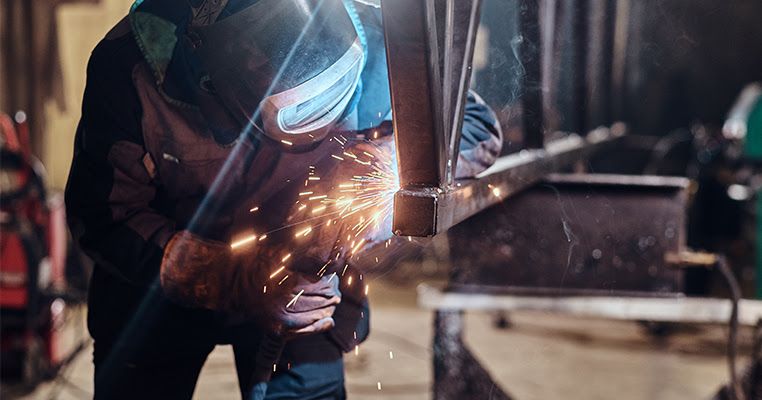
Brazing is primarily, but not entirely, used in plumbing and similar applications. Any time two materials need to fit together without being melted themselves as they would in a welding situation, brazing is a good option. Brazing is also used for dissimilar metals, which can be difficult or impossible to connect with welding. However, care must be taken to ensure that those metals are not reactive to one another.
Mechanism of Action
Each of the three methods of connecting materials has a different mechanism of action.
Welding works by melting the base materials along with a filler and fusing them together into one singular material, ideally with the same or stronger mechanical properties as the original materials. Thus, fusion takes place at a molecular level and results in a very strong and cohesive connection, assuming it’s done properly.

Brazing does not melt the base materials but does heat them enough to cause slight physical changes. The actual mechanism of fusion, however, is the brazing filler material wicked in between the two base materials. This acts like a kind of metallic adhesive to join the two together, fill the gap, and solidify into a nonreactive barrier. In pipefitting, this prevents leaks.
Soldering is similar to brazing in that while some heat is applied to the base materials, the base materials are not themselves melted. The heat is primarily applied to the solder, which melts and acts as a solid conductive mass, often primarily for electricity.
Method of Heat Application
The source of the heat used for joining materials and melting filler metal differs between each of the three kinds of fusion.
Welding uses an electrical arc to produce an immense amount of heat in a small area. This heat can be controlled using variance in voltage, amperage, and frequency to produce a tuned amount of heat for the materials being melted.
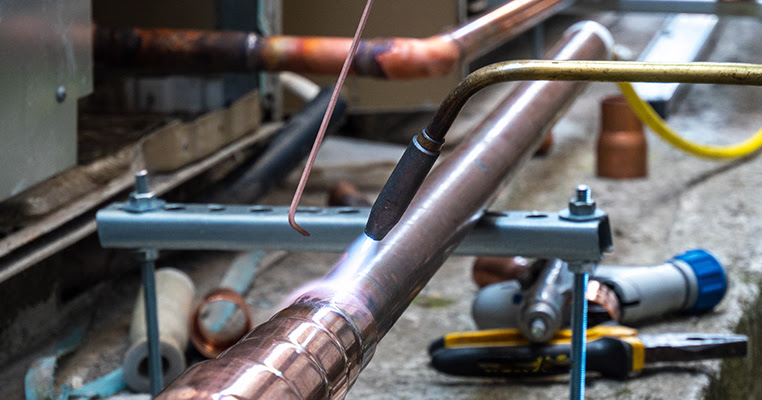
Brazing uses a torch, often of an oxyfuel variety, to directly apply heat via a jet of ignited compressed gas. This torch is very hot but still can’t compare to the heat of an electrical arc.
Soldering can either use a torch or, more commonly, an iron to apply direct physical heat on contact with solder. Since solder has such a low melting point, it doesn’t need much more than a bare moment of heat to melt into a liquid to be used for its purpose.
General Temperature
The overall temperature of the materials will vary depending on the kind of fusion as well.
Arc welding, harnessing the power of lightning, produces very high temperatures. Depending on the metals being fused, this temperature can range anywhere from 2,000 to 3,500 Celsius and, in some cases, even higher.
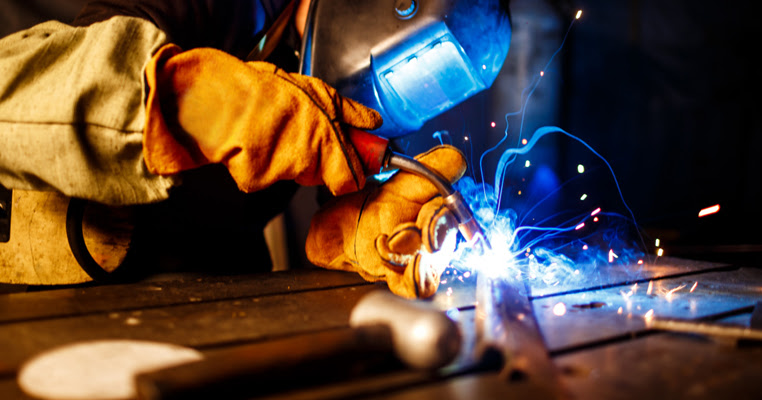
Brazing is a lower temperature application and, as it doesn’t melt the base materials, keeps heat just high enough to melt the filler and flux being used. This is generally in the range of 600 degrees C.
Soldering needs even less heat. The melting point of solder is generally in the range of 90 to 450 C, and many soldering irons are generally set to the 300–350-degree range.
Strength of Resulting Joint
The strength of a joint can be imperative or a non-factor, depending on the purpose of the welding process.
Arc welding joints are generally extremely strong unless they are not performed properly. The resulting strength of the material is often at least as strong as the base materials and, in many cases, actually stronger.
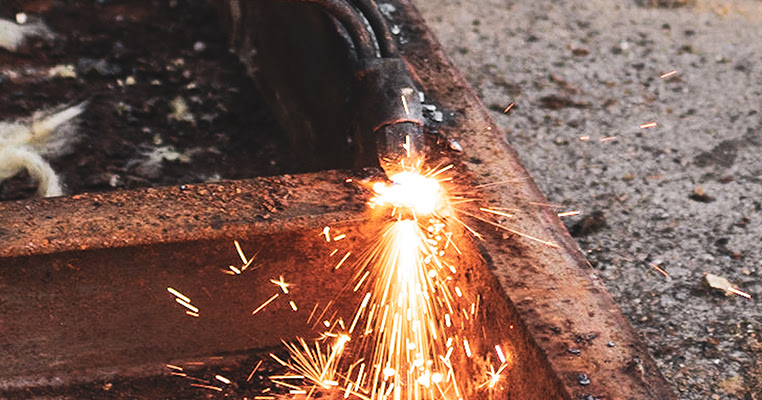
Brazing joints are not structural in general, but they can bear some load. In plumbing, for example, water hammering can be an issue in some systems, so the joints need to be able to stand up to that kind of force. They are not structural, however, so there is a maximum load they can bear.
Soldering joints are almost never structural in any way, and the forces they handle are more electrical than tensile, linear, or shear. As such, they are not very strong, but they don’t need to be. There should, ideally, be next to no force put on them.
Use of Flux
The use of flux is a way to prevent chemical changes in the materials and to prevent inclusions, ensuring a stronger and more thorough fusion between materials.
In welding, not all processes use flux. Some use flux in addition to a filler rod; others use a flux-cored filler. Many don’t use flux at all, but use a shielding gas to serve the same purpose. It depends largely on the process you’re using, and on the materials you’re fusing.
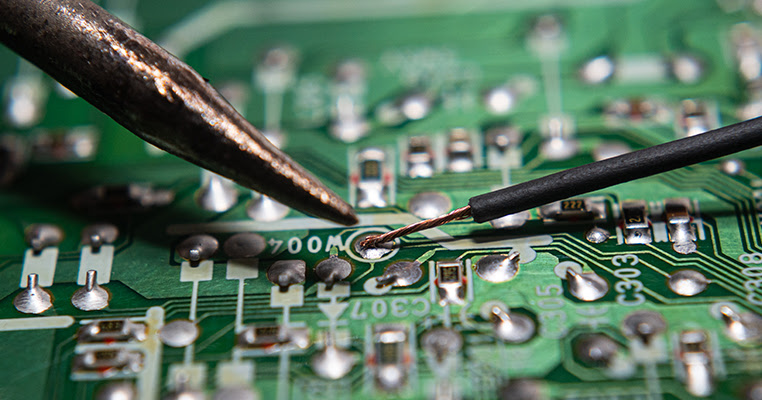
Brazing makes heavy use of flux to ensure the chemical properties of the filler material allow it to be wicked into the joint via capillary action. Flux is a key part of brazing and the process generally can’t be done – or can’t easily be done – without it.
Soldering sometimes uses flux, but it’s not always necessary. Flux will allow the solder to spread out and more comprehensively wet a surface, which can be important for larger and more effective electrical connections. However, in smaller uses and in purposes where a balled or dewetting solder isn’t a problem, flux isn’t necessary. In fact, a big part of learning how to solder is learning when flux is necessary and when it isn’t.
Change in Mechanical Properties of Base Materials
Arc welding changes the base materials when they are melted, mixed with filler, and solidified once more. This can change the physical structure of the metal molecules, as well as the chemical composition, depending on the filler used. Controlling this change is an important part of knowing which welding process to choose, as well as
Brazing and soldering should not change the composition or mechanical properties of the base materials, as they are more along the lines of an adhesive filler; they adhere to surfaces and join them, rather than melting and mixing with those materials.
Heat Treatment and Heat Changes to Base Materials
The use of heat and management of that heat varies between processes.
Arc welding has to pay close attention to heat. Too much heat is bad and can burn through or destroy a workpiece. Too little heat makes for an ineffective weld. Heat treatment can strengthen a joint after the welding, and welding heat-treated materials can remove that heat treatment. Moreover, the heat gradient through the workpiece can contribute to warping and damage, so preheating and slower cooling can be necessary to prevent distortion.

Brazing benefits from preheating to help ensure that the filler material is properly wicked up into the materials and wets across surfaces for a robust connection. While it’s not strictly necessary, it’s good practice to preheat the work area before melting filler into it. No heat treatment after the brazing is necessary or even desirable.
Soldering can benefit from some preheating, but it depends heavily on the purpose and physical needs of the joint. It’s often not necessary. Further, no post-process heat treatment is necessary.
Hopefully, our resource has helped you understand the differences between these three joining processes. There are, of course, many further differences and details, as all three have a vast body of engineering work behind them, but the basics are the bulk of what you need to know unless you’re pursuing one as a trade.


